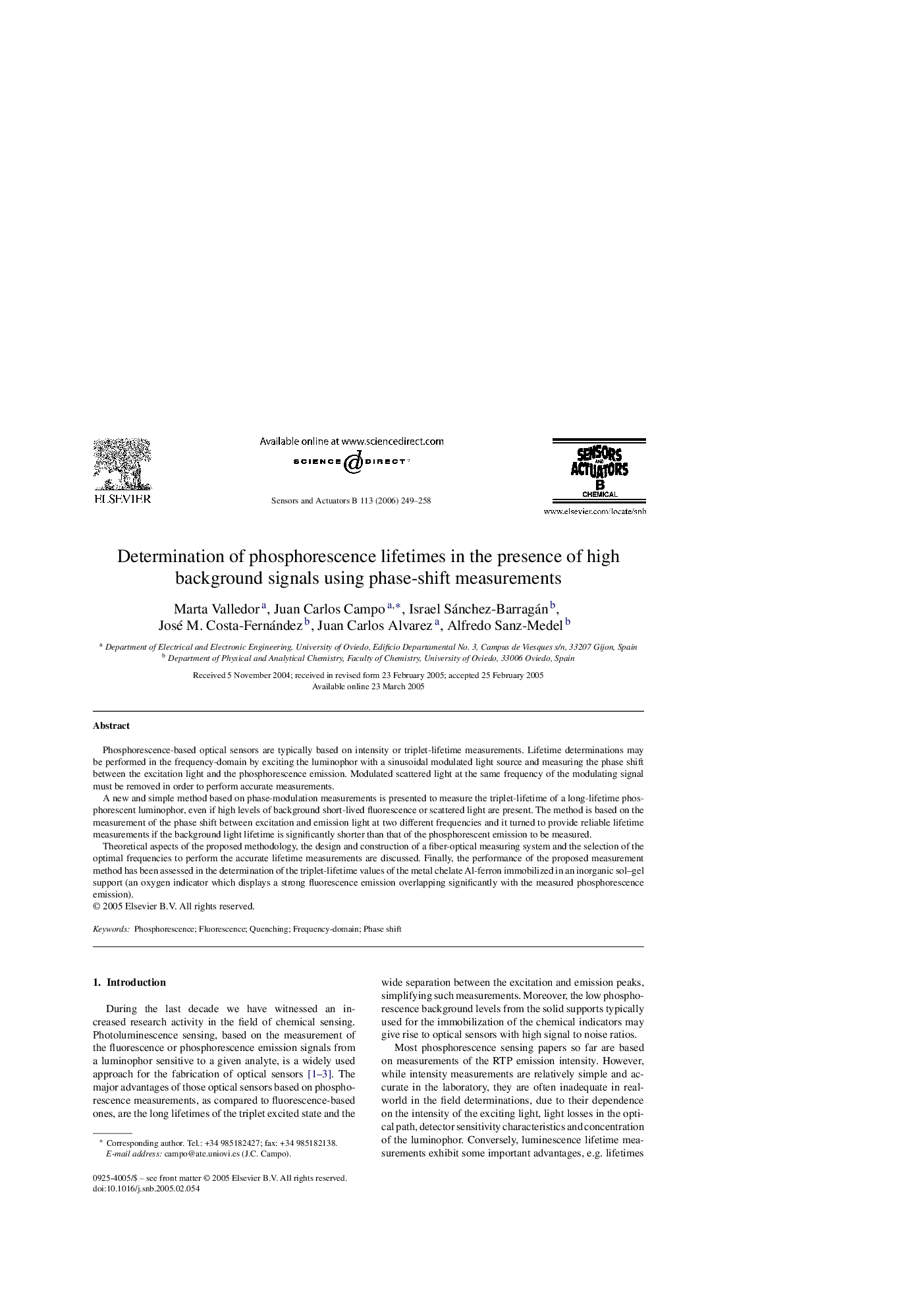| Article ID | Journal | Published Year | Pages | File Type |
|---|---|---|---|---|
| 745394 | Sensors and Actuators B: Chemical | 2006 | 10 Pages |
Phosphorescence-based optical sensors are typically based on intensity or triplet-lifetime measurements. Lifetime determinations may be performed in the frequency-domain by exciting the luminophor with a sinusoidal modulated light source and measuring the phase shift between the excitation light and the phosphorescence emission. Modulated scattered light at the same frequency of the modulating signal must be removed in order to perform accurate measurements.A new and simple method based on phase-modulation measurements is presented to measure the triplet-lifetime of a long-lifetime phosphorescent luminophor, even if high levels of background short-lived fluorescence or scattered light are present. The method is based on the measurement of the phase shift between excitation and emission light at two different frequencies and it turned to provide reliable lifetime measurements if the background light lifetime is significantly shorter than that of the phosphorescent emission to be measured.Theoretical aspects of the proposed methodology, the design and construction of a fiber-optical measuring system and the selection of the optimal frequencies to perform the accurate lifetime measurements are discussed. Finally, the performance of the proposed measurement method has been assessed in the determination of the triplet-lifetime values of the metal chelate Al-ferron immobilized in an inorganic sol–gel support (an oxygen indicator which displays a strong fluorescence emission overlapping significantly with the measured phosphorescence emission).
